May 28, 2024 By Ali 6 minutes read
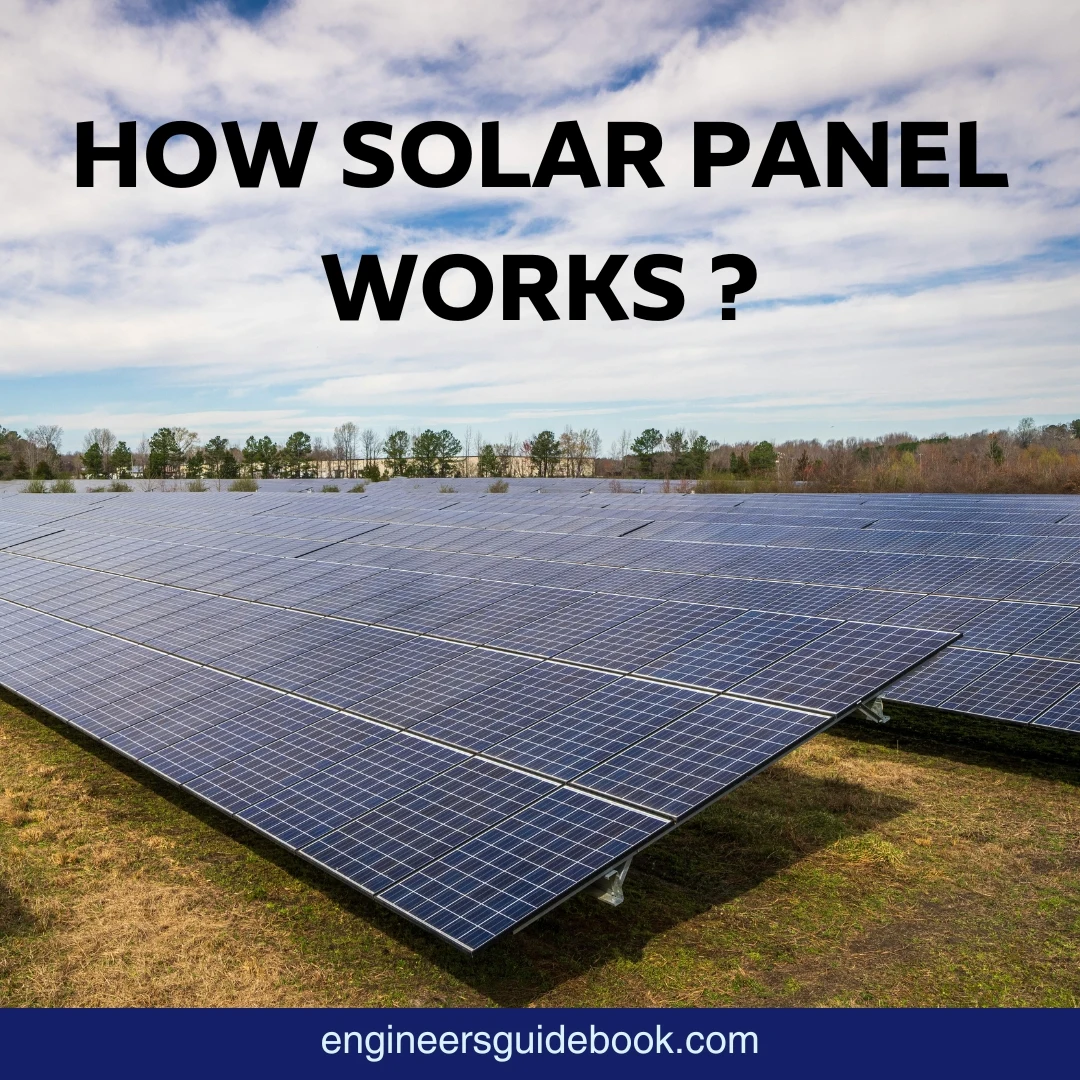
Solar energy is power we get from the sun. It is very important because it helps us use less fossil fuels like coal and oil, which can harm the environment.
Solar energy is clean and renewable, meaning we will never run out of it as long as the sun shines. Over the years, more people and businesses have started using solar energy because it’s better for our planet and can save money in the long run.
This guide will help you understand. We’ll simply explain how solar panel works.
Even though solar panels might seem complicated, this guide will make it easy to understand. Whether you are just curious or want to become a solar energy expert someday, this guide is for you.
Solar energy is the power we get from the sun. The sun sends out energy in the form of light and heat. Solar panels capture this energy and turn it into electricity that we can use to power our homes, schools, and gadgets.
The photovoltaic effect is how solar panels turn sunlight into electricity. It was discovered in 1839 by a French scientist named Edmond Becquerel. Later, in the 1950s, scientists developed the first practical solar cells using silicon. These solar cells could turn sunlight into electricity efficiently, and this is how modern solar panels started.
Solar radiation is the energy that comes from the sun. There are different types of solar radiation.
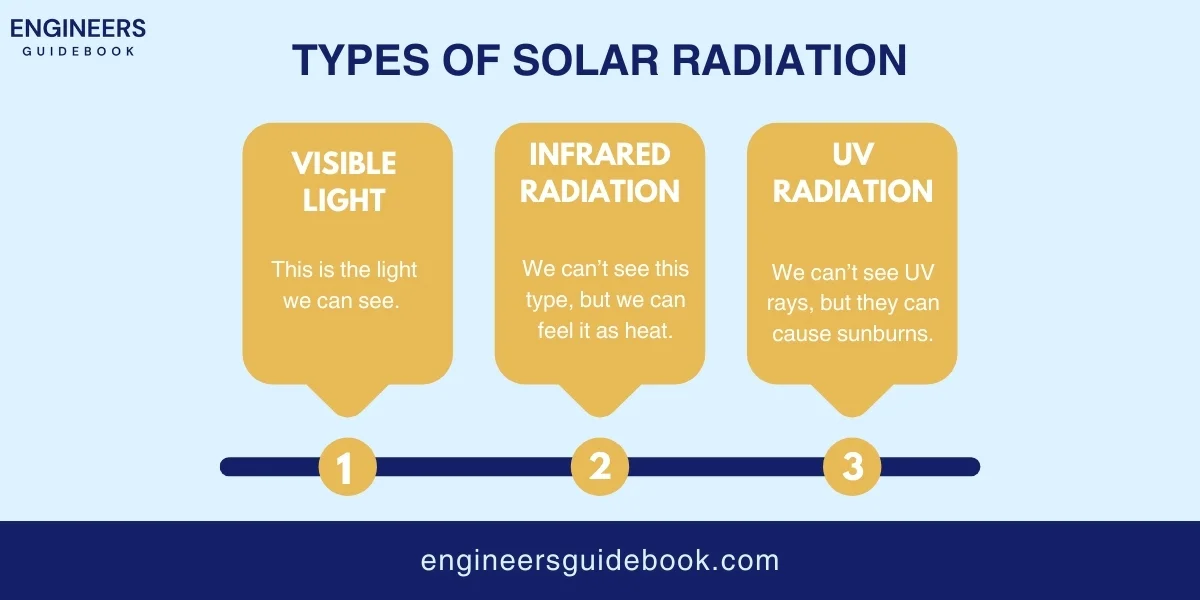
Solar energy is very important for two big reasons:
Solar energy is clean. It doesn’t produce pollution or harmful gases, so it helps keep our air and water clean. By using solar energy, we can reduce the impact of climate change and protect our planet.
Solar energy can save money. Once you have solar panels, you can use the sun’s energy for free. This can lower electricity bills and reduce costs for businesses and homeowners. Solar energy can also create jobs in the solar industry, helping the economy grow.
The photovoltaic effect is the process by which solar cells turn sunlight into electricity. Here’s a deeper look at how it works, step-by-step:
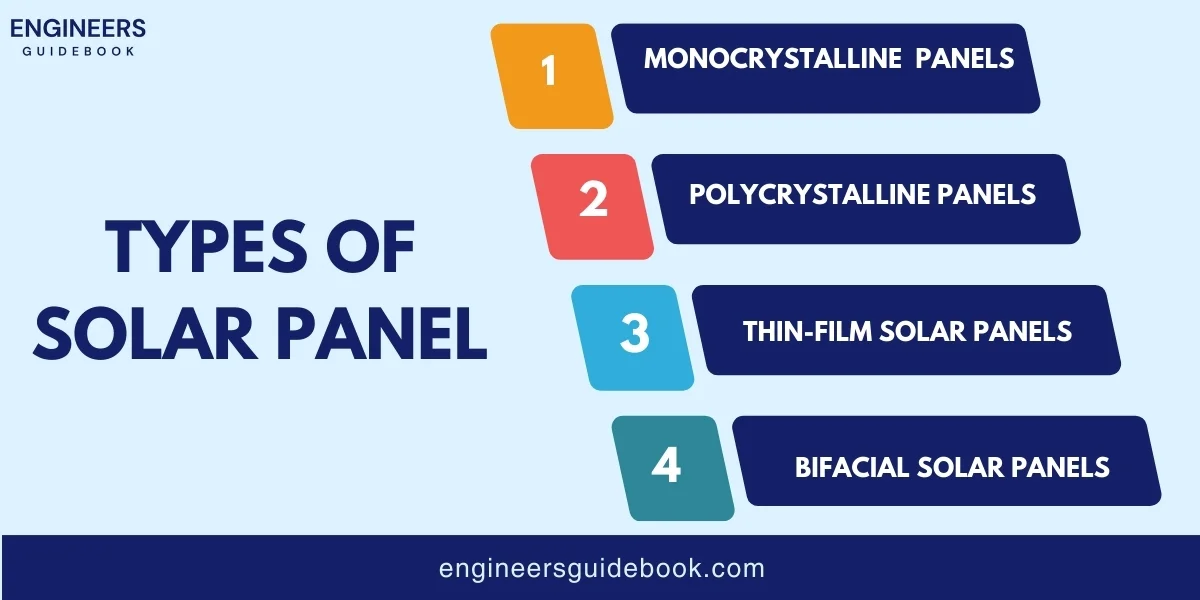
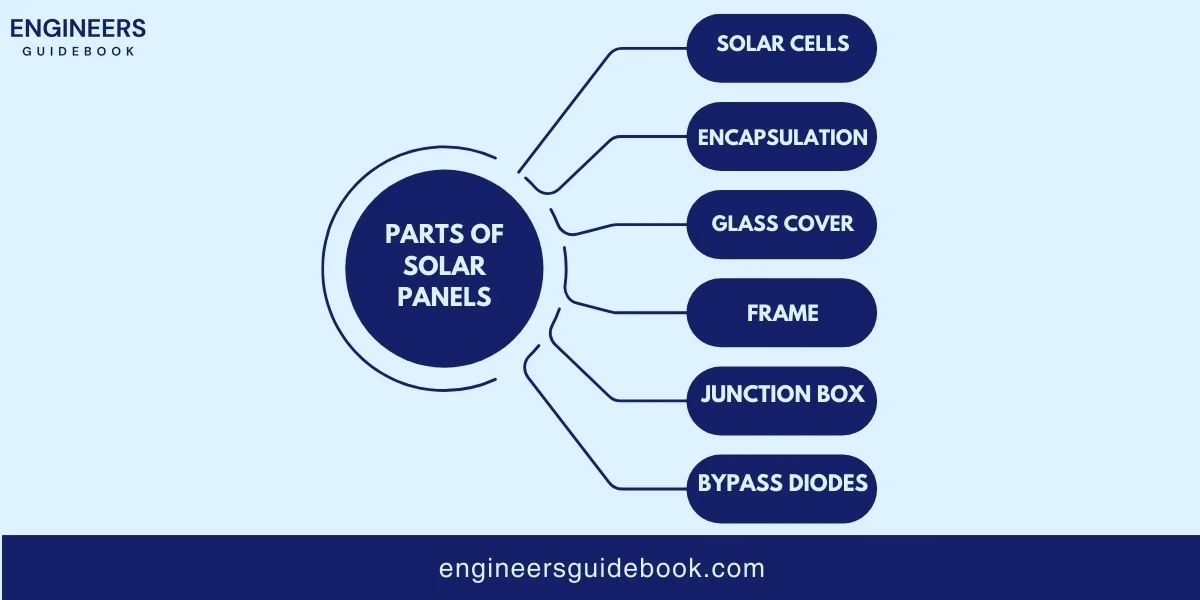

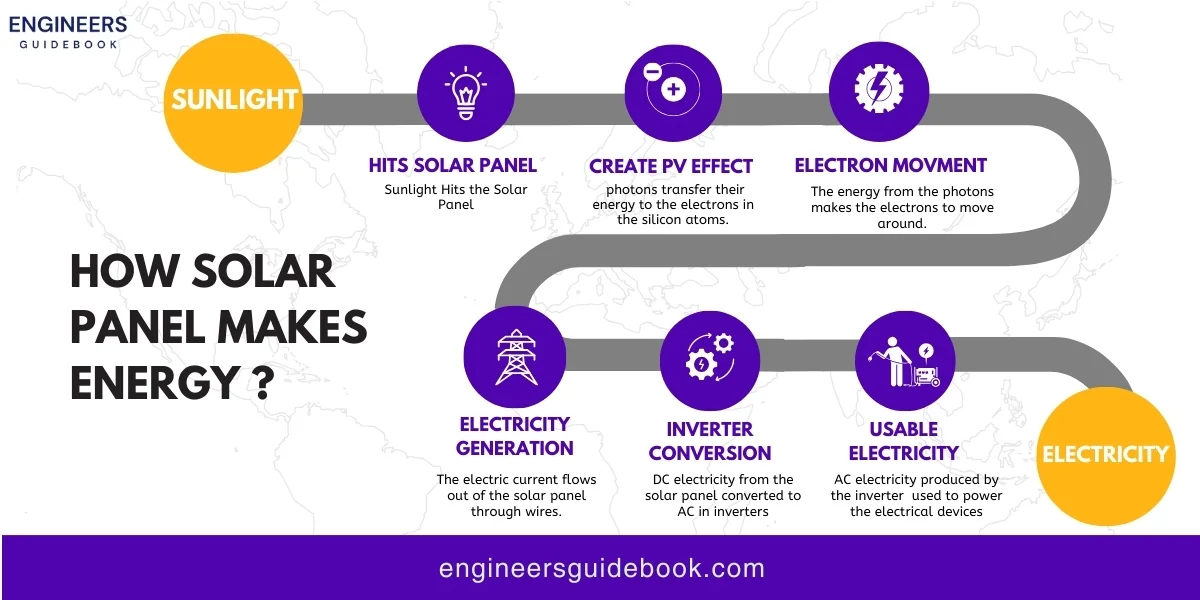
Photon Absorption: Sunlight hits the solar panels, and the photovoltaic cells within the panels absorb photons from the sunlight.
Electron Excitement: The energy from the photons excites electrons in the photovoltaic cells, causing them to become loose and move.
Electric Field Creation: The movement of electrons creates an electric field within the cells, which generates a flow of electrical current.
Direct Current (DC) Generation: The electrical current generated is in the form of direct current (DC).
Inverter Conversion: An inverter converts the DC into alternating current (AC), which is the type of electricity used in homes and businesses.
Power Usage or Storage: The AC electricity can either be used immediately to power appliances and devices or stored in batteries for later use.
Solar panels generate electricity through the following process:
Photon Absorption: Solar panels, composed of photovoltaic cells, absorb sunlight.
Electron Excitement: The absorbed sunlight energizes electrons in the cells, causing them to move.
Electric Field Creation: This movement creates an electric field within the cell, producing a flow of electrical current.
Current Generation: The flow of electrons generates direct current (DC) electricity.
Conversion to AC: An inverter converts the DC electricity to alternating current (AC), which is used to power homes and businesses.
Solar panels typically last 25 to 30 years, with performance warranties usually covering 20 to 25 years. Proper maintenance can extend their lifespan.
The amount of kW a solar panel can produce in a day depends on its size, efficiency, and the amount of sunlight it receives. On average, a standard 300-watt solar panel can produce about 1.5 to 2.5 kWh per day, assuming 5 to 8 hours of optimal sunlight.
Solar panels produce direct current (DC) electricity. This DC is then converted to alternating current (AC) by an inverter, making it suitable for use in homes and businesses.
Two disadvantages of solar cells are:
Solar panels are primarily made of photovoltaic cells, which are usually composed of silicon. These cells are encased in a protective layer of glass and mounted on a metal frame, with wiring and other components to facilitate electricity generation and connectivity.
A PV (photovoltaic) cell in a solar panel is a semiconductor device that converts sunlight directly into electricity. Made primarily of silicon, PV cells generate an electric current when exposed to sunlight, forming the basic building block of solar panels.
Yes, solar panels do require some maintenance to ensure optimal performance and longevity. Here are a few maintenance tasks typically recommended:
Regular Cleaning: Keep the surface of the solar panels clean from dirt, dust, leaves, and debris that can reduce sunlight absorption.
Inspect for Damage: Periodically inspect panels for cracks, breaks, or other physical damage that could affect their efficiency.
Check Connections: Ensure all electrical connections are secure and free from corrosion.
Trim Nearby Vegetation: Trim back any trees or foliage that may shade the panels during peak sunlight hours.
Monitor Performance: Keep track of the panel’s performance through monitoring systems to detect any drop in efficiency or output.
The principle of solar panels revolves around the phenomenon of photovoltaic effect. Here’s a breakdown of the principle:
Photon Absorption: Solar panels are made of photovoltaic cells, usually composed of silicon. When sunlight (photons) strikes these cells, they absorb the photons.
Electron Excitation: The absorbed photons transfer their energy to electrons in the semiconductor material (like silicon), causing some electrons to become free from their atoms.
Electric Field Generation: This creates an electric field across the layers of the cell.
Electric Current Generation: The separated electrons are forced by the electric field to flow in a specific direction, creating an electric current.
Direct Current (DC) Output: The current produced by the solar panel is direct current (DC) electricity.
Conversion to Alternating Current (AC): For use in homes and businesses, an inverter converts the DC electricity into alternating current (AC), which is the standard type of electricity used in most buildings.
Calculating solar power involves several steps to determine the amount of electricity a solar panel system can generate. Here’s a simplified outline:
Determine Solar Irradiance: Find the average solar irradiance in your location. This is typically measured in kilowatt-hours per square meter per day (kWh/m²/day) and can be obtained from solar resource maps or databases.
Consider Panel Efficiency: Solar panels have an efficiency rating, usually between 15% to 20%, which indicates how well they convert sunlight into electricity.
Calculate Panel Output: Multiply the solar irradiance by the area of your solar panels (in square meters) and by the panel efficiency. This gives you the daily energy output in kilowatt-hours (kWh) per day.
Account for System Losses: Factor in losses due to factors like inverter efficiency, shading, dirt on panels, and wiring losses. These losses typically reduce the actual output compared to the theoretical maximum.
Calculate Annual Output: Multiply the daily output by 365 days to estimate the annual energy production of your solar panel system.
This calculation provides an estimate of how much electricity your solar panel system can generate under ideal conditions.
The theory of solar panels revolves around the photovoltaic effect, which is the process through which sunlight is converted into electricity. Here’s a concise explanation:
Photovoltaic Effect: Solar panels are made up of photovoltaic cells, typically composed of silicon or other semiconductor materials. When photons (light particles) from sunlight strike these cells, they transfer their energy to electrons in the semiconductor material.
Generation of Electric Current: This energy excites electrons, causing them to move, which generates an electric current. The movement of electrons creates a flow of electricity.
Direct Current (DC) Output: The electricity produced by the solar panels is in the form of direct current (DC).
Conversion to Alternating Current (AC): To be used in homes and businesses, the DC electricity is converted into alternating current (AC) by an inverter.

Muhammad Ali holds a PhD in Mechanical Engineering from MIT and is currently conducting groundbreaking research on sustainable energy systems. His innovative work in renewable energy integration has earned him numerous accolades in the engineering community.
Explore the Engineer’s Guidebook! Find the latest engineering tips, industry insights, and creative projects. Get inspired and fuel your passion for engineering.
© 2023-2024 Engineer’s Guidebook. All rights reserved. Explore, Innovate, Engineer.